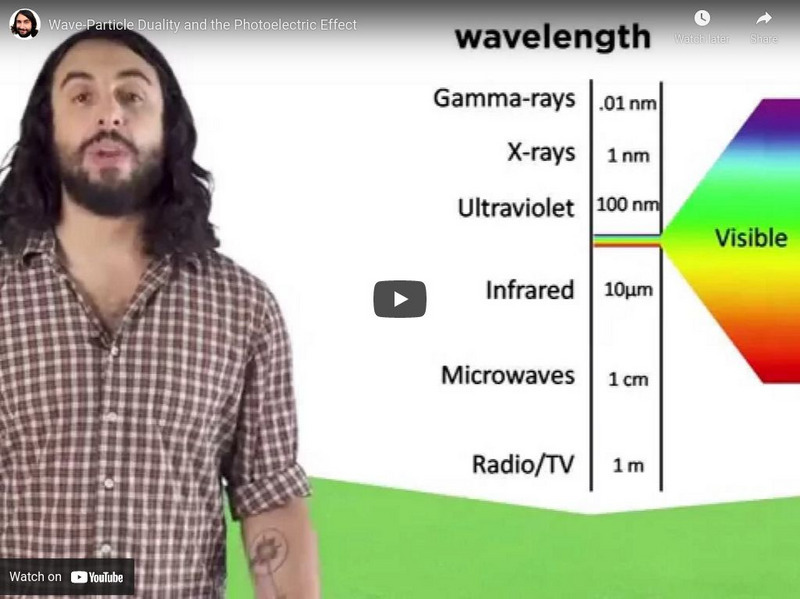SciShow
What Color Was the Big Bang?
If you could survive a trip to the very first moments of reality as we know it, what color would you see?
PBS
Planck's Constant and The Origin of Quantum Mechanics | Space Time | PBS Digital Studios
Planck's Length is the length below which the concept of length loses its meaning. What exactly does that mean and what are the incredible implications this fact has upon our reality? To find out check out this episode of Space Time...
PBS
Can Space Be Infinitely Divided?
How many times can I half the distance between my hands? Assume perfect coordination and the ability to localize my palms to the quantum level. 15 halvings gets them to within a cell’s width. 33 to within a single atom, 50 and they’re a...
PBS
Are Virtual Particles A New Layer of Reality?
Sometimes our mathematical hacks point to strange new aspects of reality. For example Max Planck used a quantization trick to figure out the spectrum of light emitted by hot objects. The quantization part of his math trick was meant to...
PBS
The Quantum Experiment that Broke Reality | Space Time | PBS Digital Studios
The double slit experiment radically changed the way we understand reality. Find out what the ramifications of this experiment were and how we can use it to better comprehend our universe.
SciShow
How Ovens Helped Discover Quantum Mechanics
Ovens are great for baking, cooking, and.... discovering quantum mechanics? In this fascinating episode of SciShow, Hank takes you through the science of quantum mechanics, and how ovens played a big part in their discovery.
SciShow
What Really Happened the First Time We Split a Heavy Atom in Half
When scientists first split the atom, they didn’t realize what they’d done until physicist Lise Meitner figured out they had discovered what we now call nuclear fission.
Curated Video
Are Virtual Particles A New Layer of Reality?
Let me tell you a story about virtual particles. It may or may not be true.
SciShow
How Quantum Mechanics Saved Physics From Ovens
You might think that quantum physics was discovered because of some super complicated electron behavior or something, but it was actually invented to explain ovens.
Curated Video
Planck's Theory: The Birth of Quantum Mechanics
Max Planck's theory was proposed by Max Planck in 1900 revolutionized the field of physics by introducing quantum mechanics and fundamentally reshaping our comprehension of the subject. Planck conducted research on black body radiation,...
Institute for New Economic Thinking
John Kay: Obliquity and the Indirect Way to Success
How "Obliquity" -- Pursuing Goals in a Roundabout Way -- is Better for Business and for an Innovative Economy Good economics is often seen as maximizing efforts in specific directions. John Kay, Visiting Professor at the London School of...
Institute for New Economic Thinking
Applying the Right Model
In part 3 of INET's interview with John Kay, he tells us what the London Tube map and Max Planck can tell us about oversimplifying systems and models
Institute for New Economic Thinking
How Science Advances, "One Funeral at a Time"
What happens to a subfield of science when a superstar of that field passes away unexpectedly? Christian Fons-Rosen argues that new research activity in the sciences–and economics?– increases after the death of a superstar, as...
CuriosaMente
¿Qué es la mecánica cuántica?
En este video conoceremos una introducción a la historia y a los conceptos básicos de la mecánica cuántica, también llamada "física cuántica". En próximos videos podremos detallar más cada uno de los conceptos o experimentos, como el de...
Physics Girl
The ULTRAVIOLET CATASTROPHE
How did the field of quantum mechanics come about in the first place? The Rayleigh-Jeans catastrophe, also known as the ultraviolet catastrophe was a prediction by the Rayleigh-Jeans law that a blackbody would radiate infinite amounts of...
Other
Professor Dave Explains: Wave Particle Duality and the Photoelectric Effect
Professor Dave explains what we mean by wave-particle duality and how this relates to the photoelectric effect. He discusses how this relationship was discovered through the work of Max Planck and Albert Einstein. [3:55]

